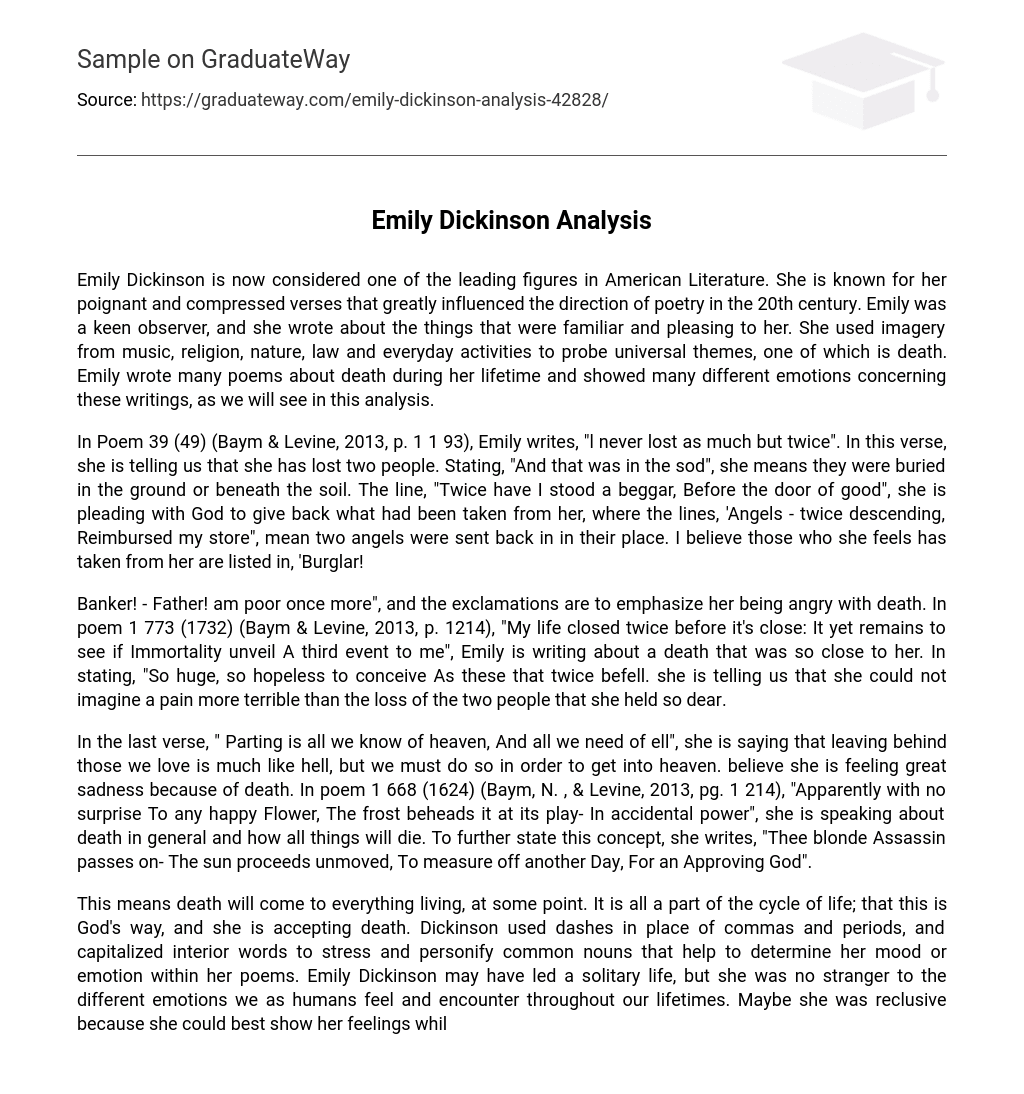Emily Dickinson is recognized as a prominent figure in American Literature. Her concise and heartfelt verses had a profound impact on the course of poetry in the 20th century. Emily possessed a keen sense of observation, choosing to write about topics that resonated with her. Drawing upon imagery from music, religion, nature, law, and everyday activities, she delved into universal themes, including death. Throughout her life, Emily penned numerous poems on the subject of death, conveying a range of emotions as exemplified in this analysis.
In Poem 39 (49) (Baym & Levine, 2013, p. 1 1 93), Emily expresses losing two people, stating “l never lost as much but twice”. She refers to them as being buried in the ground or beneath the soil, as she mentions “And that was in the sod”. The line “Twice have I stood a beggar, Before the door of good” implies her plea to God to return what was taken from her. The phrase “Angels – twice descending, Reimbursed my store” suggests that two angels were sent back in their place. I believe she is referring to those who she feels have taken from her, as she exclaims “Burglar!”
Banker! – Father! am poor once more”, and the exclamations serve to emphasize her anger towards death. In poem 1 773 (1732) (Baym & Levine, 2013, p. 1214), Emily discusses a death that was extremely close to her. By stating, “My life closed twice before it’s close: It yet remains to see if Immortality unveil A third event to me”, she expresses her experience of enduring two significant losses. Additionally, when she says “So huge, so hopeless to conceive As these that twice befell.”, she conveys that she cannot fathom a pain more overwhelming than losing those two beloved individuals.
In the last verse, the speaker suggests that parting from loved ones is similar to experiencing hell, but it is necessary to enter heaven. It is believed that the speaker is expressing deep sadness due to death. In poem 1668 (1624), the speaker discusses death as a universal phenomenon where all things eventually die. In order to emphasize this idea, she mentions a “blonde Assassin” who causes death while the sun continues on its course, marking another day for an approving god.
According to the text, all living things will eventually experience death as part of the natural cycle of life. It is implied that this acceptance of death is God’s way. The poet, Emily Dickinson, used dashes instead of commas and periods, and capitalized certain words to emphasize and personify common nouns, thereby conveying her mood or emotion in her poems. Although Dickinson lived a solitary life, she was familiar with the range of emotions that humans experience throughout their lives. It is possible that her reclusive nature allowed her to better express her feelings through writing.





